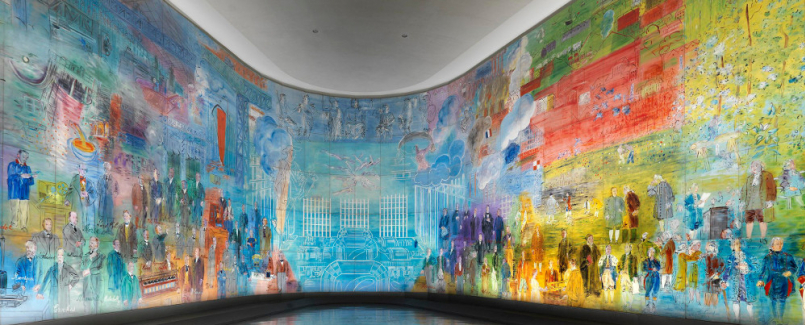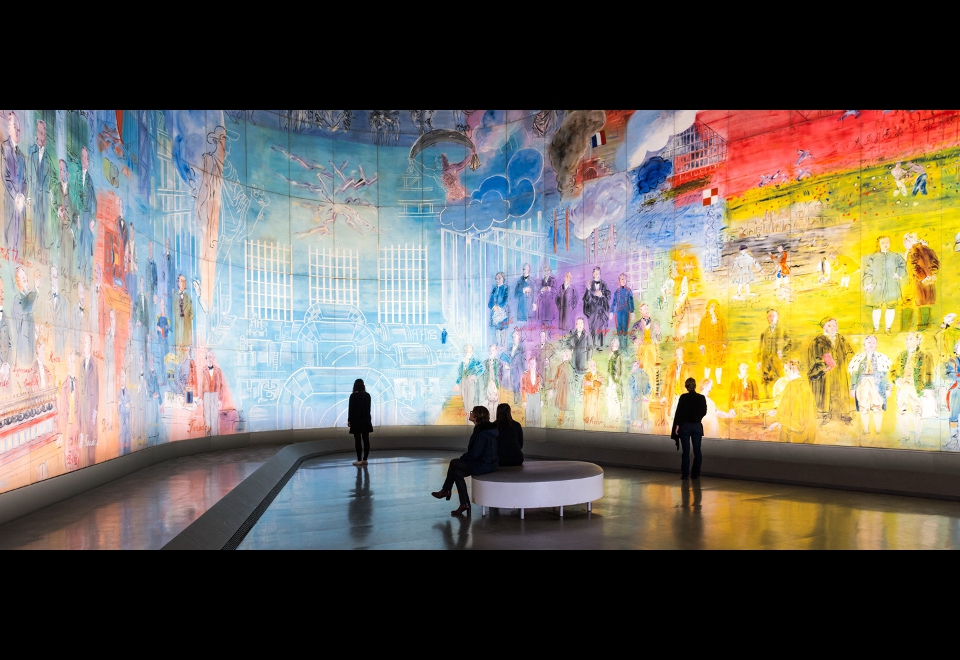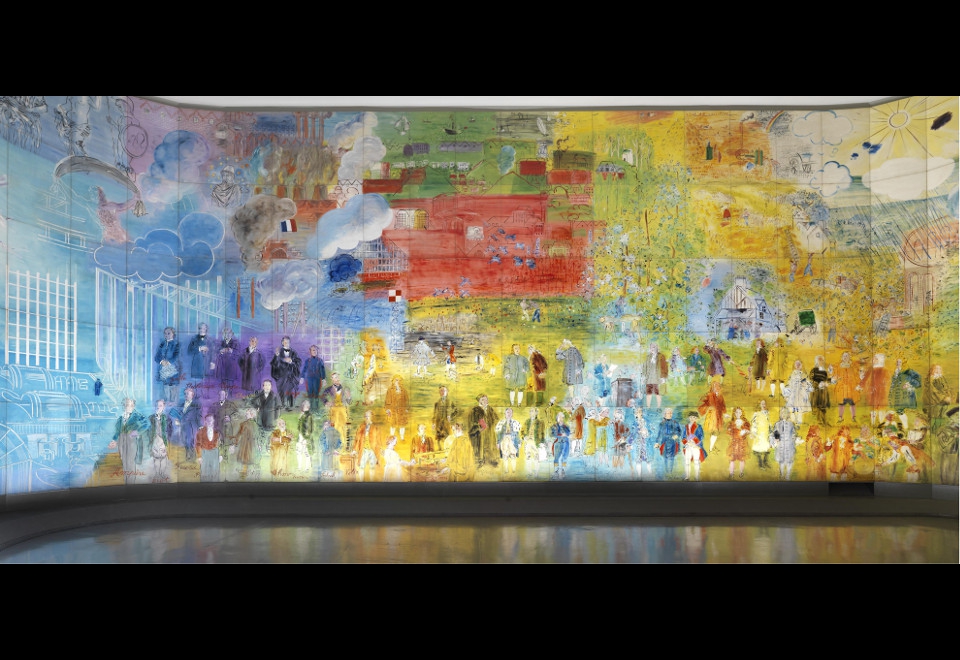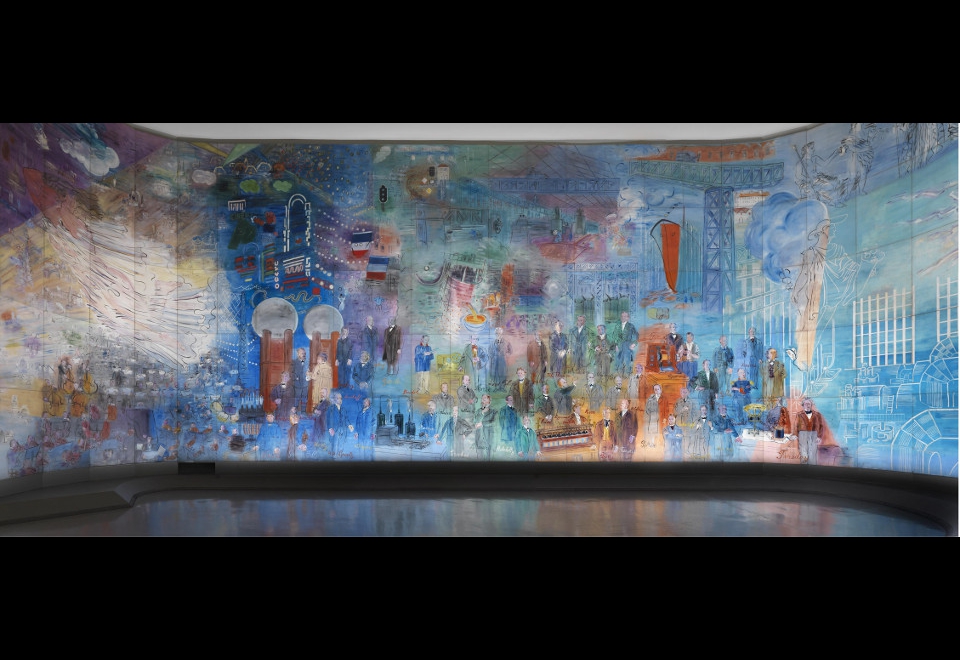La Fée Electricité Raoul Dufy

Like Fernand Léger, Robert Delaunay, and several other artists, Raoul Dufy was commissioned to paint huge frescoes for the 1937 International Exposition in Paris. His commission was for the slightly curved wall of the entrance to the Pavillon de la Lumière et de l’Électricité (“Pavilion of Light and Electricity”), built by Robert Mallet-Stevens on the Champ de Mars. He abided by the instructions given to him by the electricity company, La Compagnie Parisienne de Distribution d’ Électricité, and told the story of La Fée Électricité (“The Electricity Fairy”), taking inspiration from, amongst other things, Lucretius’s De rerum natura. The composition unfolds across 600 m2, from right to left, on two principal themes: the history of electricity and its applications – from the first observations to the most modern technical applications of it. The upper part is a changing landscape in which the painter has placed some of his favourite subjects: sailing boats, flocks of birds, a threshing machine, and a Bastille-day ball. Stretching the length of the lower half are portraits of one hundred and ten scientists and inventors who contributed to the development of electricity.
Dufy blends mythology and allegories with historical accuracy and technological description, setting up contrasts of opposites. In the centre: the Olympian gods and the Ivry-sur-Seine power-station generators connected by Zeus’s thunderbolt; primordial nature and architecture; people at their daily work and modern machines. Immediately to the left of the centre: Iris, messenger of the gods and daughter of Electra, flies in the light, over an orchestra and the capitals of the world, diffusing all the colours of the rainbow. Areas of red, blue, yellow, and green, independent of the flowing line of the drawing, organise and energise this virtuoso composition.
The method Dufy used meant that he could work very quickly (it was finished in 10 months). He used a medium prepared by chemist Jacques Maroger, which gave the paint a transparent quality, like watercolour. This apparent facility actually concealed a great deal of technical innovation, documentary research and solid work (he painted models nude and then in costumes, transferred drawings onto tracing paper in order to work out how to group them, then projected them life-size onto the panels with a magic lantern).
This huge fresco was donated to the Musée d’Art Moderne by Électricité de France and installed in 1964.
Discover the new website dedicated to La Fée Electricité : https://fee.mam.paris.fr/?lang=en

La Fée électricité
Musée d'Art moderne de la Ville de Paris
© Pierre Antoine

La Fée Electricité, 1937
Musée d’Art moderne de la Ville de Paris
© ADAGP, Paris, 2014 Photographe : Kleinefenn

La Fée Electricité, 1937
Musée d’Art moderne de la Ville de Paris
© ADAGP, Paris, 2014 Photographe : Kleinefenn

